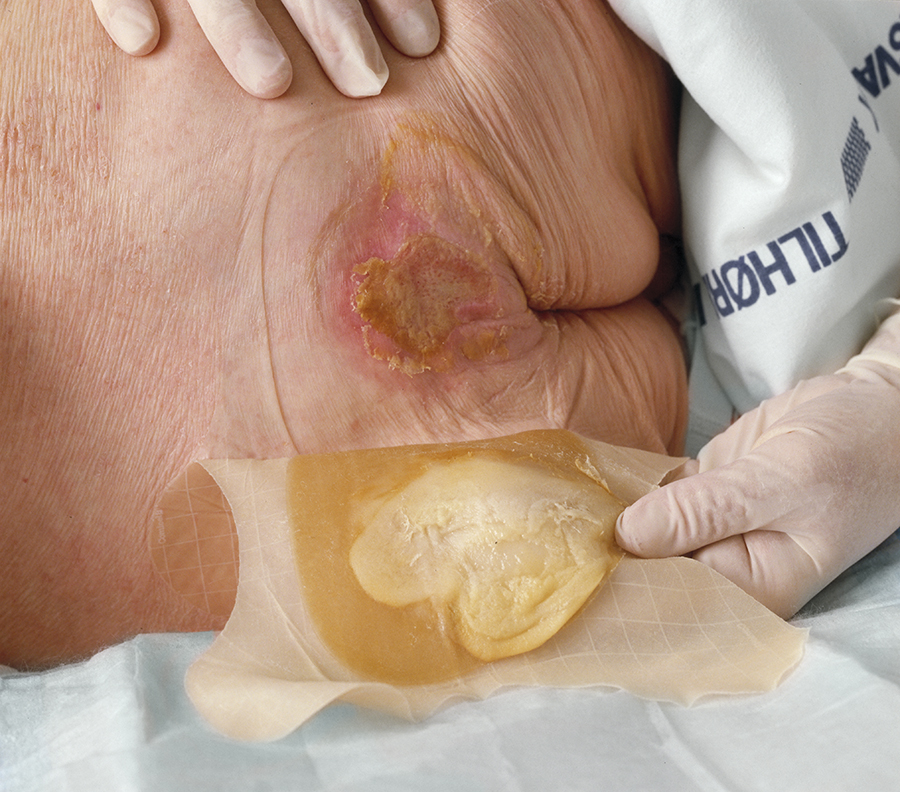Get full access with a free account
Benefits of the Coloplast® Professional Educational platform
- Get full access to all educational content, events and resources
- Track your progress
- Share content with your collegues
- Share supporting material with your patient
How do I select the right hydrocolloid dressing?
Before selecting a dressing, you should always start by conducting a holistic assessment of your patient and their wound.1

Here are some important factors to consider when selecting a hydrocolloid dressing:
- The wound’s exudate level. Hydrocolloids are intended for low to moderately exuding wounds (depending on the dressing’s thickness).1
- The wound’s location on the body. It’s important to choose a dressing shape and size that fits the wound.2 The wound’s location on the body will also help you determine whether or not you need an adhesive dressing.
- The wound’s healing stage. Hydrocolloid dressings are typically used in the later stages of wound healing.
- The wear time. You need to consider how often a dressing change can be performed, and whether or not the dressing is easy to apply and remove.
- The patient’s situation and preferences. Some hydrocolloid dressings can contain pectin, latex or colophony, which may trigger allergic or adverse reactions in some patients.
Tips for choosing the right hydrocolloid dressing
Look for a dressing that:
- matches the level of wound exudate;2
- is transparent, so you can inspect the wound without having to change or lift the dressing;
- protects fragile wound tissue;3
- is the right size for the wound and patient; and2
- is comfortable for the patient.2
For further tips on how to select the right dressing, please refer to these sections:
References
- NHS Clinical Evaluation team. Clinical review foam dressings. 2018
- Ousey K et al. Hydrocolloids in Practice. Made Easy. Wound International 2012;8(1)
- Queen D. Technology update: Understanding hydrocolloids. Wounds International 2009;1(1)
